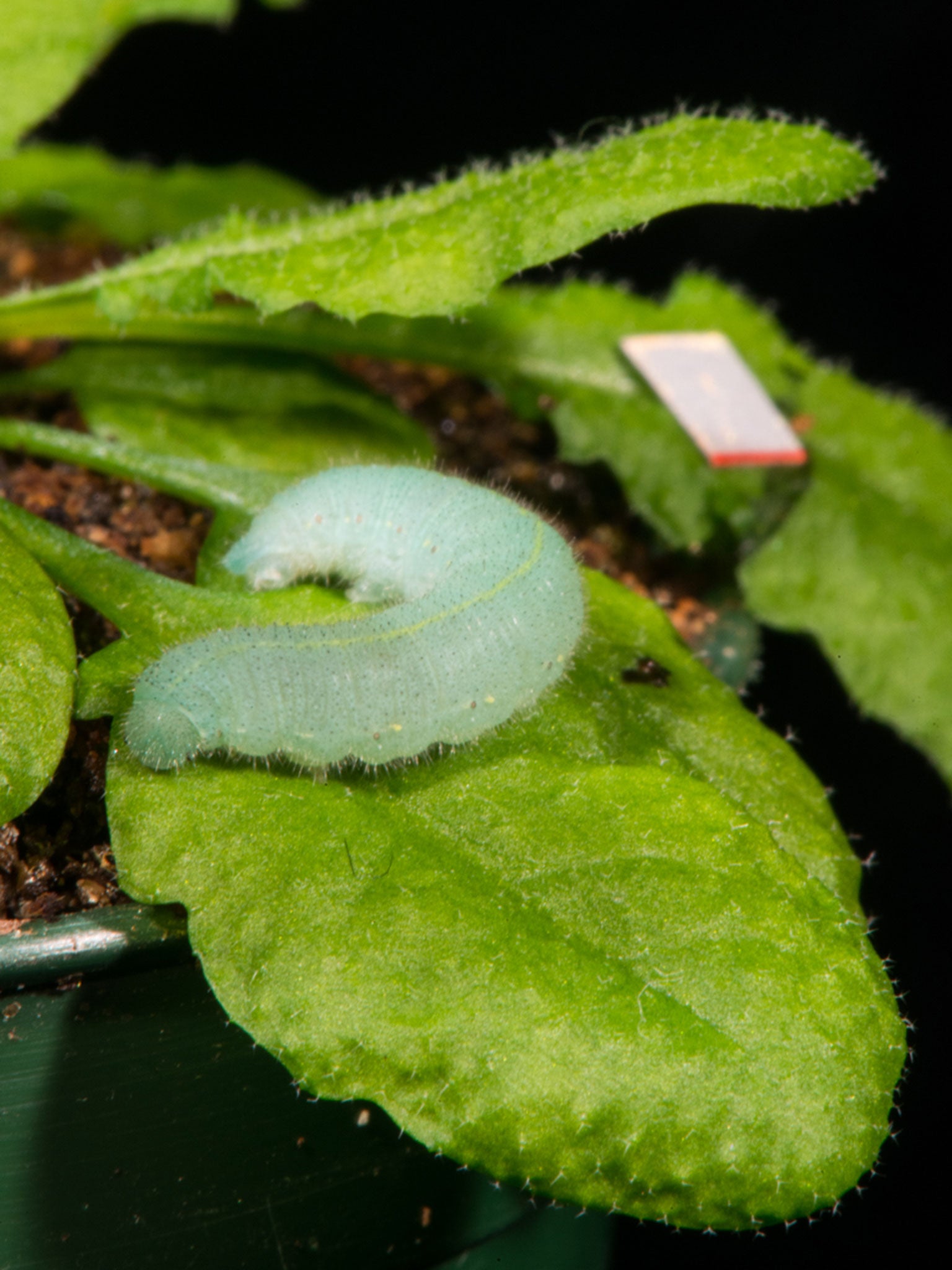The Independent's journalism is supported by our readers. When you purchase through links on our site, we may earn commission.
Plants respond defensively to the sound of caterpillars eating their leaves
Plants produce more of an unappealing chemical when exposed to the vibrations caused by caterpillars chewing

Plants respond defensively to the sounds that caterpillars make when eating their leaves, research has discovered.
Scientists at the University of Missouri (UM) found that plants produce more mustard oil, a chemical that is unappealing to many caterpillars, when exposed to the feeding vibrations caused by caterpillars chewing.
For the study, caterpillars were placed on Arabidopsis, a small flowering plant related to cabbage and mustard.
A team led by senior research scientist in the Division of Plant Sciences at the University and Rex Cocroft, a Professor in the Division of Biological Sciences at (UM) used a laser and a tiny piece of reflective material on the plant leaf to measure the movement of the leaf in response to the chewing caterpillar.
Cocroft and Appel then played back recordings of caterpillar feeding vibrations to one set of plants, but played back only silence to the other set of plants.
The team found that when caterpillars later fed on both sets of plants, the plants previously exposed to feeding vibrations produced more mustard oils than the set which had only been exposed to silence.
Caterpillars then reacted to the chemical by crawling away, suggesting the vibrations could be used to enhance plant defences in agriculture, the researchers said.
The team also found that plants exposed to other types of vibrations, such as those produced by a gentle wind or different insect sounds that share some acoustic features with caterpillar feeding vibrations, did not increase their chemical defences.
This indicates that the plants are able to distinguish feeding vibrations from other common sources of environmental vibration, the team concluded.
Cocroft said: “We found that feeding vibrations signal changes in the plant cells’ metabolism, creating more defensive chemicals that can repel attacks from caterpillars.
10 Deadliest Animals In The World
Show all 10"Plants have many ways to detect insect attack, but feeding vibrations are likely the fastest way for distant parts of the plant to perceive the attack and begin to increase their defences."
“This research also opens the window of plant behaviour a little wider, showing that plants have many of the same responses to outside influences that animals do, even though the responses look different.”
Appel and Cocroft said future research will focus on how vibrations are sensed by the plants, what features of the complex vibrational signal are important, and how the mechanical vibrations interact with other forms of plant information to generate protective responses to pests.
The study, ‘Plants respond to leaf vibrations caused by insect herbivore chewing,’ has been published in the journal Oecologia.
Subscribe to Independent Premium to bookmark this article
Want to bookmark your favourite articles and stories to read or reference later? Start your Independent Premium subscription today.

Join our commenting forum
Join thought-provoking conversations, follow other Independent readers and see their replies